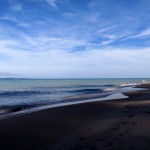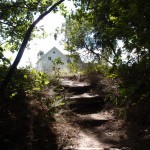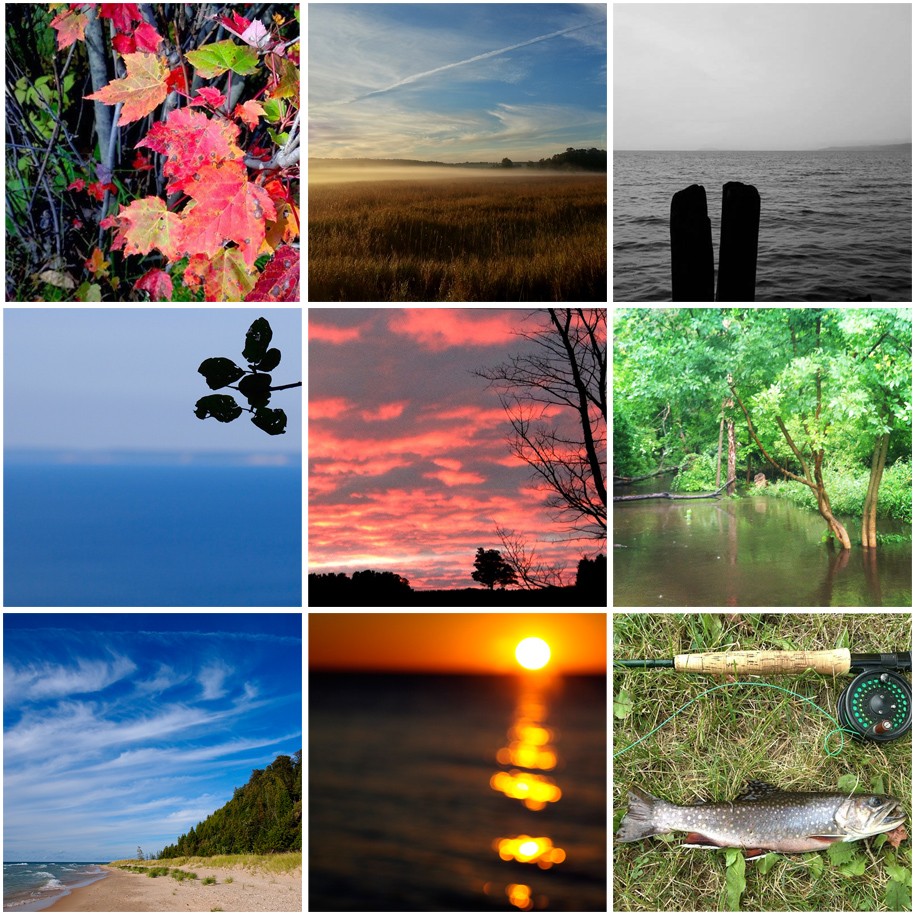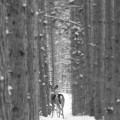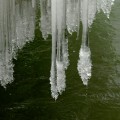Quagga Mussels – A Public Service Announcement
- At October 03, 2013
- By Kim
- In Kim's posts, Local Happenings
 3
3
On a recent walk along the shoreline, I came across a scene that abruptly changed my thoughts from the beauty of the undisturbed lakeshore on which I walked to the undeniable evidence that the ecosystem of the Sleeping Bear Dunes and many others around the Great Lakes are significantly threatened. It was enough to shake me. So I hope you will humor me with this out of the ordinary post.
The “scene” at first appeared to be the normal sandy white shores, until the crunch under my feet made me realize it was not sand at all. Rather, I was crunching my way on top of giant depositories of shells. I had heard of zebra mussels and thought these were them, but after inquiring with a neighbor in the know I was set straight. Apparently zebra mussels are so yesterday. Today’s mussel is the quagga. A quagga you might ask (as I did)? They get their name from an extinct subspecies of zebra that looked like this. The quagga zebra had brown stripes and less of them than the black and white zebra we are familiar with. The quagga is a deserved namesake as the mussels are also paler and less striped than their cousins the zebra mussels. Coloring and stripes are where the similarities end though; the quagga mussels are far from extinct. In fact, estimates back in 2011 put the number of quaggas blanketing the bottom of Lake Michigan at 950 trillion, weighing in at 500 million pounds. Yes, that’s right; more than the entire weight of fish in Lake Michigan. Of the mussels in the lake, they make up 99%, zebras a meager 1%.
All these mussels (native to the Ukraine and first spotted in Lake Michigan in 1997) are in official terms causing a “collapse of the ecosystem”. They eat Lake Michigan’s other inhabitants’ food source but unfortunately are not a food source to anyone else. These little mollusks also filter the water. Although this has allowed for wonderful tourism photos in recent years as clarity has increased twofold; it provides an unfriendly home for the native fish in addition to allowing for the growth of algal blooms. You may be familiar with the giant blooms threatening the tourism and fishing industries around Lake Erie, as well as the threat to Ohioans drinking water? Yes, that green stuff you’ve seen washing ashore here could get worse, resulting in botulism outbreaks killing off fish and even my beloved shorebirds. Now, that is over the line quaggas! (In fact all you knit bombers out there; I have a better task for you than dressing the local stop sign up as a flower. Message me about a knitting bee to craft protective bird booties).
On a serious note, our government is currently shut down as lawmakers battle about spending. Representatives have been and will again be asked to consider measures about the protection of the Great Lakes. Congress recently saw an act pushed by various state lawmakers and wildlife organizations to add quagga mussels to the injurious species list; a list on which zebra mussels claim membership already. Few expect the measure, that would allow additional funding, to pass. There are other battles for government money to fight off Asian carp, something that needs as little as 20 fish to establish a footing in the Great Lakes. These “invasives” can be abstract as you hear about them and quite easy to overlook as a pressing issue needing funds among so many others with which our elected officials deal. Then one day you may find yourself like I did; walking along our beloved lakeshore and that abstract concept will be right under your nose (or feet as it may) in all its concreteness.
It may be too late to be the squeaky wheel, but with some funding and research perhaps there is a solution or lesser collapse to be had? Here’s to hoping. Otherwise the people behind the “Got Sand?” bumper stickers might want to put in a change order for “Got Quaggas?”
- Rock hunting just got a little more difficult
- A 12″ shelf of quagga shells in the National Lakeshore
- A small group of zebra mussels next to the quaggas
- Holy quagga mussels!
Beach Walks in September
- At September 29, 2013
- By Kim
- In Kim's posts, Places
 2
2
September brings with it a bit of melancholy each year. Evenings of care-free exploration, spurred on by the long hours of daylight, are replaced with a return to seriousness and awareness that another year is passing. Each evening as the sun sets a little earlier, we are gently reminded that we should head home; after all it’s a “school night” now. The tourists and migrating birds alike all return south and we are left with our beach towns and their quietude.
The beaches, in their abandonment, seem to be the perfect spot to muse on this passing of seasons. As my mom, daughter (with her increasingly weighted-down pockets of rocks), and I walked along the lakeshore near Pyramid Point and Port Oneida this past weekend, we found ourselves utterly alone for miles, free to take it all in at our own pace.
We collected bits of nature. We watched the freighters passing through the Manitou Passage and the ferry heading home from the Manitou to Leland. We saw the resident bald eagles flying overhead and noticed the upended trees that had succumbed to the erosion of Pyramid Point.
The change at this location is so dramatic each year. The shifting landscape, the turn of the seasons, and the knowledge of how much difference another year will bring to my child: it makes the quote from the English writer Julian Barnes ever more poignant:
“When you’re young you prefer the vulgar months, the fullness of the seasons. As you grow older you learn to like the in-between times, the months that can’t make up their minds. Perhaps it’s a way of admitting that things can’t ever bear the same certainty again.”
Along this shoreline, much will change by the time the warm weather returns. We will change too. But what is certain for me and my walking partners is that we will reunite and reacquaint ourselves with this shoreline, in all its glory, again next year. And hopefully for many more to come.
A Look Through Our Lens – Week of September 26, 2013
- At September 26, 2013
- By Kim
- In Kim's posts, Local Happenings
 0
0
1) An early splash of fall color on the official start of the season – Cadillac
2) Early morning sunshine over misty fields – Maple Bay 3) Rainy autumn day -Clinch Park 4) The sun and blue return – Alligator Hill Trail 5) Sunset – along the road in Benzie County 6) Flood waters – Kids’ Creek 7) A crisp fall beach walk – Pyramid Point 8) The sun’s descent – North Bar 9) A brook trout caught fly-fishing (and released) – Northern Michigan
This week’s Instagram photos courtesy of contributors Nick Nerbonne, Brian Beckwith, Nick Perez, and Kim Schwaiger.
Follow us here: http://instagram.com/northernmiswag
A Look Through Our Lens – Week of September 19, 2013
- At September 19, 2013
- By Kim
- In Kim's posts, Local Happenings
 0
0
Photo Descriptions (L to R):
1) Morning Sun over West Bay – Traverse City 2) A crisp fall day on the water – Port Oneida 3) Where sand meets water – Lake Michigan 4) Lily pads floating on serene blue waters – Up North 5) Sun Sparkles on the lake – Empire 6) Glittering waves – Pyramid Point 7) The view on a perfect September day – Empire Bluffs 8) Pumpkin patch – Old Mission Peninsula 9) Migrating birds – Northern Michigan
Instagram photos this week by Kimberly Schwaiger, Nick Nerbonne, & Nick Perez. See more here: http://instagram.com/northernmiswag
A Look Through Our Lens – Week of September 12, 2013
- At September 19, 2013
- By Kim
- In Kim's posts, Local Happenings
 0
0
Photo descriptions (L to R):
1) The view from the top – Tahquemenon Falls 2) Smurf house – Otter Lake 3) Windy autumn day on the water – Glen Arbor 4) Blue skies over Lake Michigan – Pyramid Point 5) Storm rolling in over Lake Superior – 12 Mile Beach 6) Sunlight peeking through the trees – Esch Road Beach 7) Fresh local peaches – Laman Farm 8) Company during a walk along the beach – Leelanau County 9) Windswept dunes – Sleeping Bear Point
Instagram photos this week by Kimberly Schwaiger, Nick Nerbonne, & Brian Beckwith. See more here: http://instagram.com/northernmiswag













